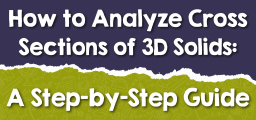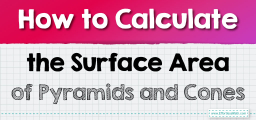How to Understand the Properties of Isosceles and Equilateral Triangles
Triangles, while seemingly simple, exhibit an array of fascinating characteristics. Among these are the symmetrical wonders - the isosceles and equilateral triangles. Steeped in congruence and perfect proportionality, these triangles stand out with their unique properties and applications. Join us as we delve deeper into the captivating world of these special triangles and reveal their mathematical secrets.

Step-by-step Guide: Isosceles and Equilateral Triangles
1. Isosceles Triangle: Definition and Properties:
An isosceles triangle has two sides of equal length, known as the legs. The third side is called the base.
- The angles opposite the equal sides are congruent.
- The altitude drawn to the base bisects both the base and the vertex angle.
2. Equilateral Triangle: Definition and Properties:
An equilateral triangle has all three sides of equal length.
- All interior angles are congruent and each measure \(60^\circ\).
- All altitudes (or heights) are congruent.
- Every equilateral triangle is also equiangular.
3. Area and Perimeter Formulas:
For an isosceles triangle with base \(b\) and height \(h\):
\( \text{Area} = \frac{1}{2} b \times h \)
\( \text{Perimeter} = b + 2 \times \text{length of one leg} \)
For an equilateral triangle with side \(a\):
\( \text{Area} = \frac{\sqrt{3}}{4} \times a^2 \)
\( \text{Perimeter} = 3a \)
Examples
Example 1:
Given an isosceles triangle with a base of \(10 \text{ cm} \) and legs of \(12 \text{ cm} \) each, find its height.
Solution:
Using Pythagoras’ theorem for one half of the triangle (a right triangle):
\( h = \sqrt{\text{leg}^2 – \left(\frac{\text{base}}{2}\right)^2} \)
\( h = \sqrt{12^2 – 5^2} \)
\( h = \sqrt{119} \) or approximately \(10.9 \text{ cm} \)
Example 2:
Find the area of an equilateral triangle with a side length of \(8 \text{ cm} \).
Solution:
Using the area formula for an equilateral triangle:
\( \text{Area} = \frac{\sqrt{3}}{4} \times 8^2 = 55.4 \text{ cm}^2 \)
Practice Questions:
- Calculate the area and perimeter of an isosceles triangle with a base of \(14 \text{ cm} \) and legs of \(15 \text{ cm} \) each.
- Determine the height of an equilateral triangle with a side length of \(9 \text{ cm} \).

Answers:
- Using the Pythagoras’ theorem, height \(h = \sqrt{15^2 – 7^2} = \sqrt{164} \approx 12.8 \text{ cm} \). Area \(= \frac{1}{2} \times 14 \times 12.8 = 89.6 \text{ cm}^2 \). Perimeter \(= 14 + 2 \times 15 = 44 \text{ cm} \).
- Using the area formula relationship, height \(h = \sqrt{9^2 – 4.5^2} = \sqrt{56.25} = 7.5 \text{ cm} \).
Related to This Article
More math articles
- How to find Reference Angles from the Calculator
- Top 10 Tips to Overcome TABE Math Anxiety
- Algebra Puzzle – Challenge 48
- Top 10 Tips to Overcome AFOQT Math Anxiety
- Addition of Four-Digit Numbers
- The Ultimate TExES Core Subjects Math Course (+FREE Worksheets & Tests)
- Top 10 Tips to Overcome PERT Math Anxiety
- FREE 4th Grade Georgia Milestones Assessment System Math Practice Test
- 7 Best PSAT Math Study Guides
- Top 10 6th Grade FSA Math Practice Questions


























What people say about "How to Understand the Properties of Isosceles and Equilateral Triangles - Effortless Math: We Help Students Learn to LOVE Mathematics"?
No one replied yet.